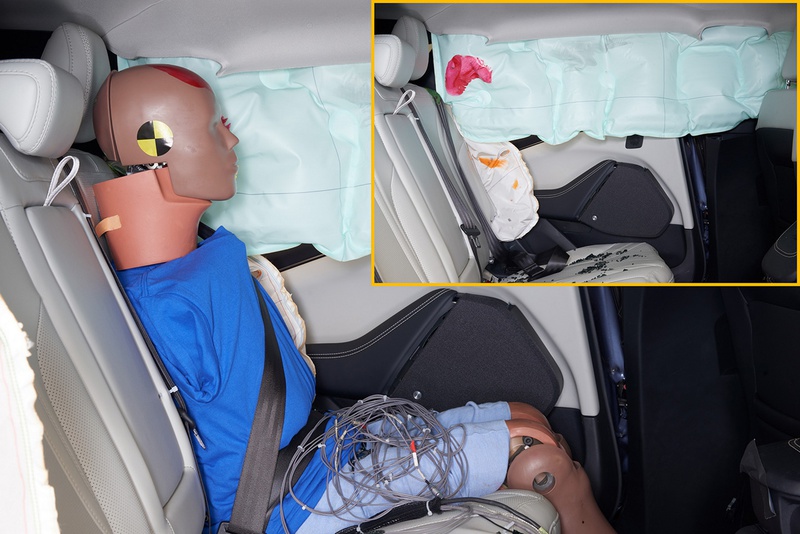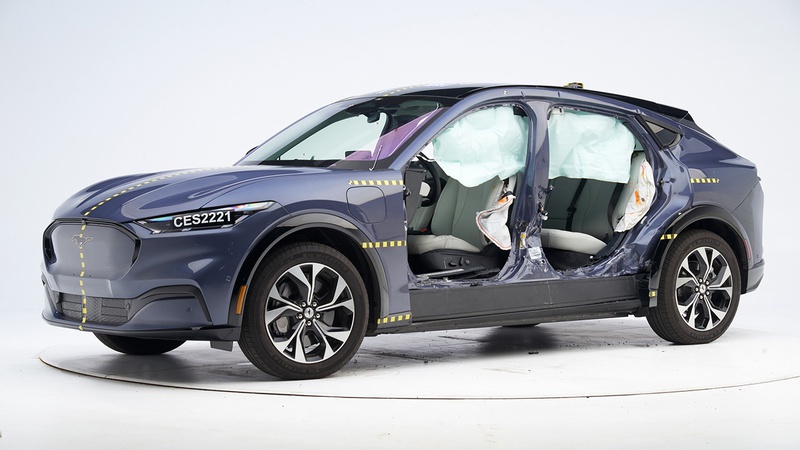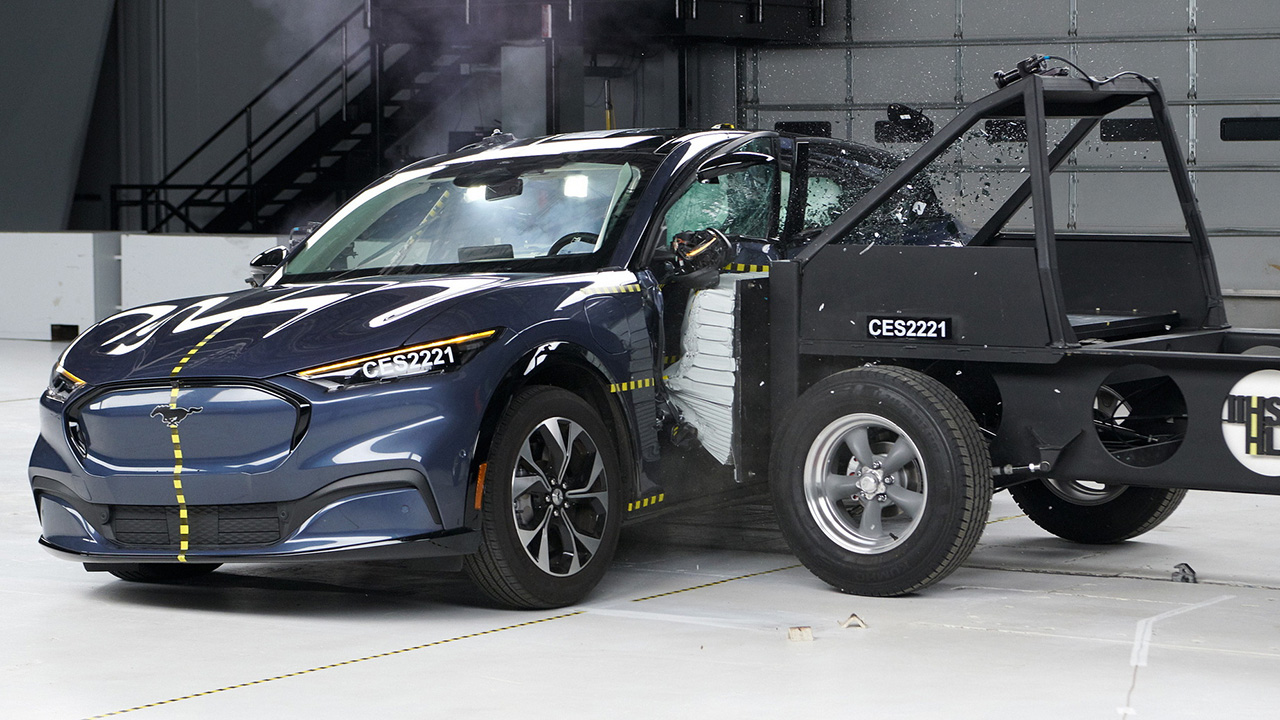The Mustang Mach-E performs well in tests for driver and rear passenger head protection. Dummies show a low risk of injury to most body regions, though the driver's torso is at somewhat elevated risk.
The SUV was downgraded from good to acceptable for structural performance because the left rear door partially opened in the crash. Though the door opening didn't have much bearing on how severely the dummy was injured or how much crush damage the car sustained, it could prove hazardous to an occupant during a crash. If doors open upon impact, anyone inside - especially those not wearing a seatbelt - may be only partially ejected or fully thrown from the vehicle.


IIHS announced a year ago that it would be implementing new, more severe side impact crash testing to better reflect the vehicles on U.S. roads today, which are heavier and taller than those originally tested when the test was created. That is why, over time, there have been more devastating episodes that result in more fatalities.
The updated IIHS test is similar to the original evaluation but uses a heavier barrier traveling at a higher speed to simulate the striking vehicle. The new barrier weighs 4,200 pounds (1,905 kg) - close to the weight of today's midsize SUVs - and strikes the test vehicle at 37 mph (60 km/h), compared with a 3,300-pound (1,496 kg) barrier traveling at 31 mph (50 km/h) in the original evaluation.
For now, a good rating in the original test is enough to qualify for either of the Institute's awards. However, starting in 2023, a good or acceptable rating in the updated test will be required for the lower-tier TOP SAFETY PICK award, and a good rating will be needed for the higher-tier TOP SAFETY PICK+.


With just one out of the 20 small SUVs tested last year by the group earning a "Good" grade under the new system, testing has proven to be difficult.
Source: IIHS

